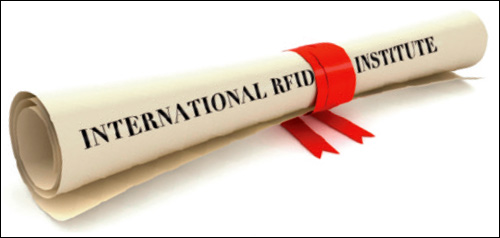There are no hard statistics about the adoption of radio frequency identification technologies. Companies aren’t required to report when they deploy a solution, and research firms track overall sales of hardware and software systems, but not the number of deployments or the industries in which they were made. One source of insights into adoption trends, however, is the RFID Journal readership database.
There are currently 102,000 registered readers in the RFID Journal database, up from roughly 64,000 in 2009. When we look at a breakdown of readers by industry and country, it’s clear that interest in RFID is growing across all sectors and geographic regions. But interest in some industries is growing faster than in others.

Manufacturing has always been—and continues to be—one of the largest segments of the RFID Journal database. The percentage of manufacturers in our database rose from 6 percent to 7 percent from 2009 to 2012 and to 9 percent in 2015. This growth is also reflected in the increasing number of articles we publish about manufacturing companies worldwide, such as AGC Asahi Glass (Japan), Bosch Rexroth (Germany), Deere-Hitachi (United States), Madshus (Norway) and TECO (Taiwan).
The retail sector is among the hottest for RFID right now, with large, high-profile deployments by Kohl’s, Macy’s, Marks & Spencer, Target, Tesco and other major companies. News of those deployments has sparked interest among other retailers, and that segment of our database has increased to 5 percent this year, from 3 percent in 2009.
Another sector that has been growing in our database is energy, mining and construction. That sector was flat at 2 percent from 2009 through 2012, but rose to 3 percent in 2015. The decline in oil prices may be encouraging energy companies to look to new technologies to make them more efficient. Government regulations to improve worker safety also may be spurring interest.
The food and agriculture segment, which has always been small, rose from 1 percent to 2 percent from 2012 to 2015. RFID has long been used to track cattle, and more countries are requiring tracking of animals, but these systems are relatively straightforward to deploy and most companies required by regulation to track livestock don’t spend much time researching RFID. We believe ranchers are interested in learning about other RFID applications, such as automated milking stations that use RFID to track the amount of milk a particular animal produces. In addition, the number of farms and food producers coming into the database suggests there is growing interest in low-cost temperature sensors that can help keep produce fresh.
Readership in all industries rose, but it increased more slowly in some sectors. This is reflected in percentage declines, because other sectors in the database grew faster. One surprise: Given the efforts by Airbus and Boeing to tag parts, we expected interest to be rising quickly in the aerospace sector. But from 2009 to 2015, that sector fell by 1 percent of the overall database. That trend might be changing. Recently, we’ve seen a noticeable number of new aerospace companies entering the database.
It’s not a surprise that the consumer packaged goods sector continues to fall as a percentage of the database. Readers from that industry accounted for 3 percent of the database in 2009, 2 percent in 2012 and just 1 percent in 2015. Adoption began with Walmart requiring CPG companies to tag pallets and cases, but the focus soon shifted to item-level tracking. Given the low cost of consumer packaged goods, there was little value in tracking at the item level and interest waned. It will likely be revived as RFID readers are installed at warehouses and receiving docks at stores, where tagging at the pallet and case levels can be done at little extra cost.

The percentage of readers from the defense sector also decreased. This is no doubt due to the cuts in defense spending in the United States and other countries. We saw government interest in RFID systems decline relative to other sectors after the 2008 financial collapse, when tax revenues fell off sharply. Interest has not yet recovered, though some countries are deploying RFID to track government assets.
The number of readers within the RFID sector—that is, hardware, software and service providers—remained about the same during the past three years, though the number of RFID companies increased. Overall, RFID companies fell as a percentage of readers from 18 percent in 2009 to 16 percent in 2012 and 13 percent in 2015.
Intriguingly, the number of consultants, students and IT providers grew as a percentage of the total database, suggesting that interest is picking up more broadly. As consultants and IT providers (companies that offer cloud services or write applications) hear about big RFID deployments or find themselves being asked about it by their customers, they realize they need to get up to speed on the technology. More students are considering RFID as a career path.
Additional evidence indicates interest in RFID is expanding. The “other” segment of the RFID Journal database increased to 12 percent in 2015, from 10 percent three years earlier. This is due partly to more people signing up anonymously, but we have also seen companies from new sectors, such as asset management and event management, joining our readership.
Illustrations: iStockphoto

